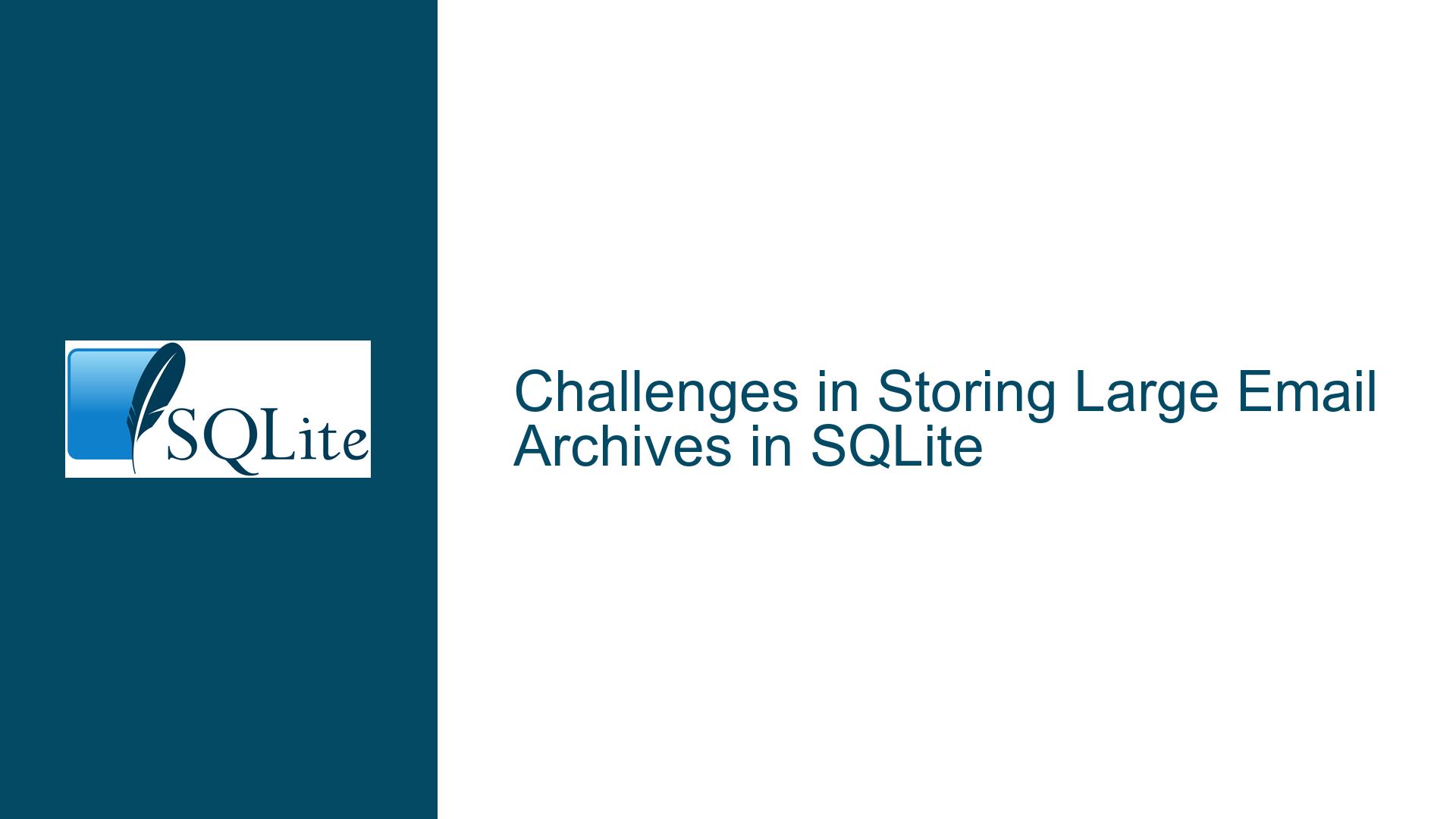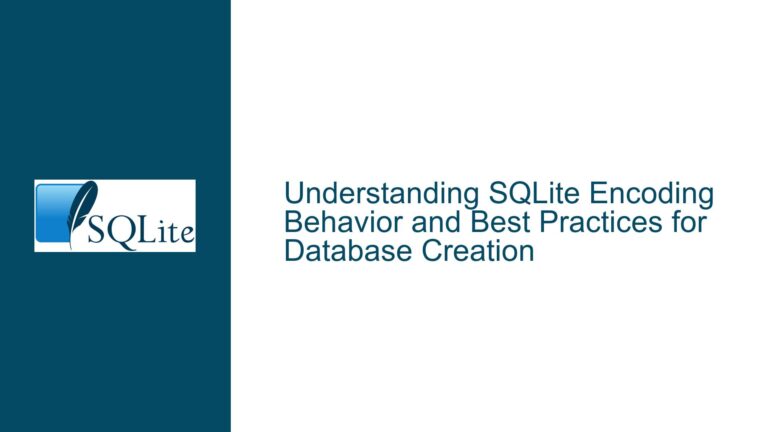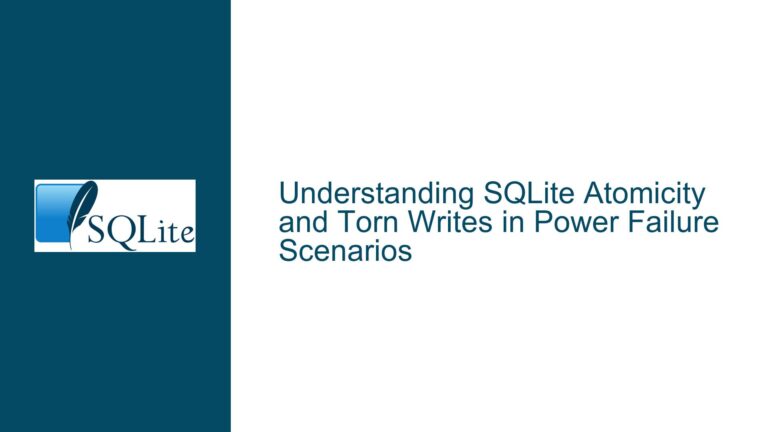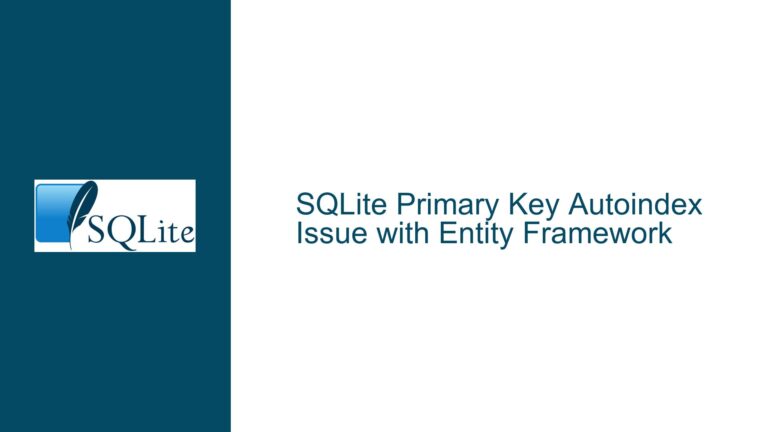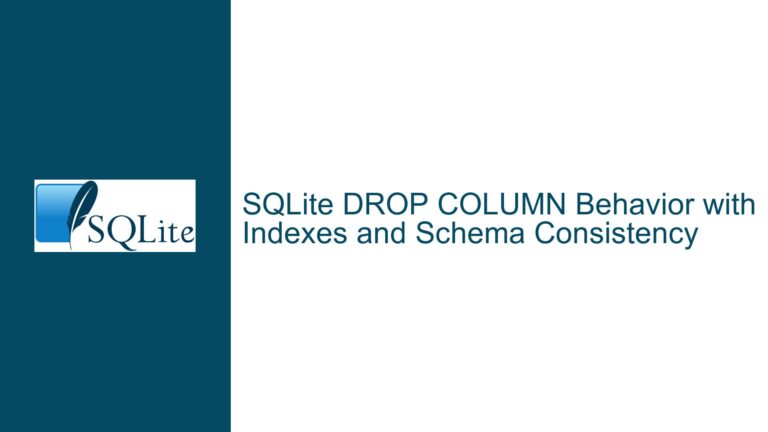Challenges in Storing Large Email Archives in SQLite
Understanding the Requirements for Email Archiving
In modern organizations, managing email archives is crucial for both operational efficiency and legal compliance. The need to retain emails, especially for legal purposes, drives companies to seek effective storage solutions. For small companies with high turnover rates, the challenge intensifies as they deal with a mix of small and large email accounts. The proposed solution involves using SQLite to create a read-only web client that can efficiently handle email storage and retrieval.
The core requirement is to parse mbox files—exported from Google Workspace—and store the emails and attachments in an SQLite database. Given the size of some accounts, which can range from 10GB to 70GB, the design must ensure that searching for emails by subject or sender remains efficient while also accommodating the storage of large attachments.
Potential Challenges with Storing Large Files in SQLite
When dealing with large files in SQLite, several challenges arise that can impact performance and data integrity.
Handling Large Attachments
One of the most significant concerns is the management of large attachments, particularly those exceeding 1GB. SQLite has a maximum length limit defined by SQLITE_MAX_LENGTH, which necessitates careful planning when storing BLOBs (Binary Large Objects). If attachments are larger than this limit, they must be split into smaller segments stored across multiple rows. This complicates both data retrieval and management.
Performance Implications
Storing large email archives directly in an SQLite database can lead to performance degradation. When BLOBs are stored within the database, they are typically placed at the end of each row. This requires SQLite to navigate through overflow pages during data retrieval, which can slow down access times significantly, especially when searching for specific emails or attachments.
Additionally, if mbox files are retained as-is with pointers stored in SQLite, accessing specific parts of these large files can be slow if not managed correctly. The use of file handling functions such as fseek is essential for optimizing access times when dealing with large files.
Complexity of Database Management
Managing a database that contains large BLOBs can lead to increased complexity in terms of schema design and maintenance. For instance, altering table constraints or making significant schema changes can be cumbersome and time-consuming when dealing with multi-GB tables. This complexity necessitates a more straightforward approach to database management, which may involve keeping BLOBs outside the SQLite database.
Strategies for Efficient Email Archiving in SQLite
To address the challenges identified, several strategies can be employed to optimize the use of SQLite for email archiving.
Use External Storage for Attachments
One effective approach is to store large attachments outside the SQLite database while retaining references within it. This method allows for easier management of files over a file system and provides flexibility for future requirements such as compression or encryption. By storing only pointers (file path, offset, length) in the database, you maintain a lightweight database structure that enhances query performance.
Optimize Database Schema Design
Designing an efficient schema is critical for ensuring optimal performance when querying emails. Considerations should include:
Indexing: Implementing indexes on frequently queried columns such as subject and sender can significantly improve search speeds.
Normalization: Proper normalization reduces data redundancy and enhances data integrity while simplifying updates and deletions.
Partitioning: For very large datasets, partitioning tables based on certain criteria (e.g., date ranges) can improve performance by limiting the amount of data scanned during queries.
Implement Efficient Data Retrieval Techniques
When retrieving data from mbox files or databases, employing efficient techniques is essential:
Byte-based Access: Instead of relying on line-based access methods like
SplFileInfo::current(), utilize byte-based access methods such asfseekto quickly navigate to specific positions within large files.Caching Mechanisms: Implement caching strategies to store frequently accessed data temporarily in memory, reducing the need for repeated disk reads.
Regular Maintenance and Backups
Regular maintenance tasks such as vacuuming the database and rebuilding indexes are vital for maintaining performance over time. Additionally, implementing a robust backup strategy ensures that data integrity is preserved while minimizing downtime during maintenance activities.
Legal Compliance Considerations
Given that email archiving often serves legal purposes, it’s crucial to implement procedures that ensure compliance with regulations regarding data retention and privacy. This includes establishing clear policies on how long emails should be retained and ensuring secure access controls are in place to protect sensitive information.
Conclusion
Successfully archiving emails using SQLite requires careful consideration of various factors including file size limitations, performance implications, and management complexity. By adopting strategies such as external storage for attachments, optimizing schema design, implementing efficient retrieval techniques, and ensuring regular maintenance, organizations can create a robust email archiving solution that meets both operational needs and legal requirements.
